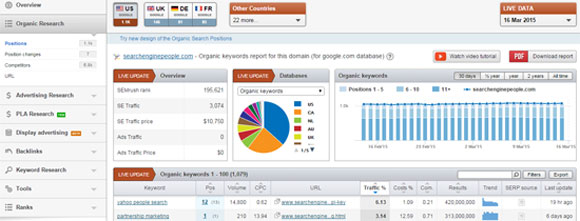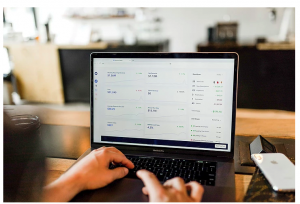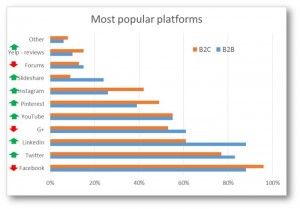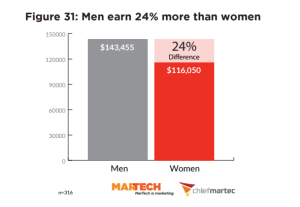
By now, everyone knows that a business must have a web presence to remain competitive. The question is how to make the most of a business blog so you get a positive ROI.
If you, your CEO, or marketing manager is unsure of the benefits of blogging, consider the following advantages of growing a business blog:
- It drives traffic to your main website and consumers get exposure to your products or services.
- It indirectly helps your entire website rank higher in search engines.
- It serves as a platform to develop better relationships with customers and partners.
- It builds your brand’s reputation and authority.
However, you can’t just start publishing stories and expect results; planning plays a crucial role in building a powerful blogging campaign. Here are a few factors to consider when starting a business blog.
What Is My Business Blog’s Purpose?
A business blog must directly or indirectly generate revenue to justify the allocation of resources to managing it, but you shouldn’t outright promote and sell your company in every blog post. How you achieve that result is determined by the role your blog will play as a part of your overall marketing strategy.
This is where you decide your blog’s overarching purpose. Do you want to:
- establish yourself as an authority?
- grow traffic to product/service pages?
- build an email subscription list?
- generate qualified leads?
- encourage sign-ups?
- sell directly to customers?
Answering these questions before you begin will help you direct your efforts and maximize results from the get-go.
“What comes first, the compass or the clock? Before one can truly manage time (the clock), it is important to know where you are going, what your priorities and goals are, in which direction you are headed (the compass). Where you are headed is more important than how fast you are going. Rather than always focusing on what’s urgent, learn to focus on what is really important.” – Unknown
Who Is My Target Audience?
After determining your ultimate goal, you must try to identify your target audience. By understanding your ideal potential customer or reader, you can optimize your blog’s content to cater to their needs and wants. The benefits will be: better blog metrics (lower bounce rates, more page views, higher click-through rates, longer time on-site, etc.) and greater conversions.
Ask yourself:
- Am I building a B2C or B2B blog? This will determine how you write blog posts.
- What are the characteristics of my ideal reader/customer – geography, economic status, interests, personality, etc.?
- What are their business needs and concerns? What keeps them up at night?
- How can I differentiate my blog and offerings from competitors? What will get their attention?
Knowing this information will guide you in providing blog content that your target audience will find useful and valuable, and thereby solidify your reputation as a trustworthy expert in the industry.
How Do I Reach My Goal?
You can now start to develop a content marketing plan.
Create A Content Plan
A content plan starts with researching topics, questions and answers readers are consistently seeking. Personally, my favorite tools are SEMrush.com, Google’s Keyword Planner, and sometimes BuzzSumo.
I start with SEMrush because you can enter your competitor’s URL and find the keywords they are ranking for – just go to the Organic Research > Positions section. Since the free version only provides a few results, you can choose to filter by Position, Volume, Traffic %, or CPC to get as many results as possible.

As you find valuable keywords, enter them into Google’s Keyword Tool to find variations. This will yield more keyword ideas and help you understand the relationship/relevancy between different phrases. Better yet, you may even find keywords that are lower competition and easier to rank for.
Finally, you can use BuzzSumo to identify the types of blog posts that have high social engagement.
Repeat this process for dozens of competitor sites and hundreds of keywords. The goal is to find blog post ideas that are essentially “low hanging fruit”, meaning that, while you are targeting high-value/high-competition keywords that may take months or years to rank for, you can simultaneously grow your blog’s traffic by developing content for medium to high-value/low-competition keywords to yield immediate results.
This will help you craft articles that will reach the right audience, which in turn increases the chance of converting them to customers.
Be Consistent
Consistency is key to successful implementation of your plan.
Consistency in publishing schedule. Readers like to know when a new post will come out. You don’t have to post every day, but if you post irregularly, readers never know when to come back to consume your content. Eventually, your blog be excluded from their reading list. This is also one reason an email list is so important.
Consistency in publishing quality content. While it’s understandable that you don’t publish one viral post after another, it is paramount that you regularly provide content that readers will find worthwhile. Everyone’s time is important to them, so don’t waste your readers’ time with a stopgap post just so you can say you published something for that week.
The bottom line with consistency is to not give up when your blog isn’t an instant sensation in the first month. Meaningful results take a minimum of 6 months and, in highly competitive industries, sometimes years.
Internal Linking
Internal link is a practice wherein you connect your blog posts/pages with one another. There are two main reasons for making internal linking a habit.
You provide readers with additional information about a topic mentioned in the article. Link internally for readers because it facilitates the process of finding relevant background information that supports your current article.
You improve on-page SEO. Internal linking also offers an SEO benefit – your site structure is flattened, more pages get indexed, time on site and page views increase, and bounce rate decreases.
Overall, internal linking improves the user experience.
Craft Evergreen Content
Evergreen, or timeless, content remains relevant over long periods of time. Guides and how-tos are good examples of evergreen content.
Other types of evergreen content include:
- Lists – “Top 10 Tips…”, “Best 25 Ways To…”, “101 Things To Do While…”
- Link/Resource Lists – “60 Blog Posts For Designing eCommerce Websites”, “20 Website Tutorials For Business Blog Design”, “Best 50 SEO Blogs To Follow”
- Opinion Posts – “SEO Predictions For 2015”, “How Technology Will Change The Financial Services Industry”, “Why Cheap Oil Is Good For Everyone Except Oil Companies”
- Glossary or Definitions Page – “SEO Terms First Time Bloggers Must Learn”, “Car Insurance 101 – Different Types of Coverage”, “Guide To Legal Definitions”
Evergreen content that addresses high volume search queries is crucial to growing your business blog.
Ultimately, the goal is to pull in readers, answer their questions or concerns for free, and build a great reputation. Eventually when you offer a product or service that addresses their needs or wants, you can use that relationship built on trust and value to turn your readers into customers.
In the long run, the soft sell is the most effective because it minimizes buyer’s remorse and thus negative emotions towards your brand.
Business Blogging
Understanding the importance of having a business blog is one thing. Actually building one and making it work for your business requires constant planning, commitment and hard work. And while your blog will not be an overnight success, with the right mindset and proper execution, it can be a game-changer for your business.
Now Read:
Gary Dek is a professional blogger, writer and SEO expert. He is the founder of StartABlog123.com and specializes in content marketing, link building strategies, and helping entrepreneurs grow online businesses.
How To Plan Your Business Blog
The post How To Plan Your Business Blog appeared first on Search Engine People Blog.
(394)










